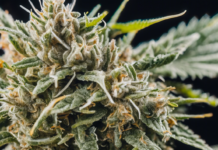Red Blood Cells (RBCs) are integral components of the human circulatory system, responsible for carrying oxygen from the lungs to the body’s tissues and carbon dioxide from the tissues back to the lungs for exhalation. Also known as erythrocytes, RBCs are disc-shaped cells produced in the bone marrow through a process called erythropoiesis.
Structure and Function of RBCs
Structure:
- Shape: Biconcave disc shape with a diameter of around 6-8 micrometers.
- Lack of nucleus: Allows for more space to carry oxygen.
- Hemoglobin: Protein molecule that binds to oxygen and gives RBCs their red color.
- Membrane: Comprised of lipids and proteins, allowing flexibility for passing through capillaries.
Function:
- Oxygen transport: RBCs bind to oxygen in the lungs and release it in tissues.
- Carbon dioxide transport: RBCs pick up carbon dioxide from tissues and transport it to the lungs for exhalation.
- Regulation of pH: RBCs help in maintaining the body’s acid-base balance.
- Key role in immune response: RBCs can interact with other immune cells to modulate immune responses.
Importance of RBC Count
The number of RBCs in the blood is crucial for overall health. An RBC count can help determine various conditions, such as anemia (low RBC count) or polycythemia (high RBC count). The normal range for RBC count varies between men and women, with men typically having higher counts due to testosterone effects on erythropoiesis.
Factors Affecting RBC Count
Several factors can influence RBC count:
– Nutritional deficiencies: Lack of iron, vitamin B12, or folate can lead to decreased RBC production.
– Chronic diseases: Conditions such as kidney disease or cancer can affect erythropoiesis.
– Hormonal imbalances: Thyroid disorders or testosterone levels can impact RBC production.
– Genetic factors: Conditions like thalassemia or sickle cell anemia can affect RBC count and function.
Common RBC Disorders
Anemia:
Anemia is a condition characterized by a decreased number of RBCs or hemoglobin in the blood, leading to symptoms of fatigue, weakness, and pale skin. Types of anemia include iron deficiency anemia, vitamin deficiency anemia, and hemolytic anemia.
Polycythemia:
Polycythemia is a disorder where there is an excess of RBCs in the blood, leading to increased blood viscosity and potential clotting risks. It can be primary (due to bone marrow disorder) or secondary (due to conditions like chronic hypoxia).
Sickle Cell Disease:
Sickle cell disease is a genetic disorder where RBCs have an abnormal crescent shape, leading to blockages in blood vessels, pain crises, and organ damage. It is more common in individuals of African, Mediterranean, or Middle Eastern descent.
Maintaining Healthy RBC Count
To ensure a healthy RBC count, individuals can:
– Eat a balanced diet: Rich in iron, B vitamins, and folate to support RBC production.
– Stay hydrated: Proper hydration helps maintain blood volume and RBC function.
– Exercise regularly: Physical activity can stimulate erythropoiesis and improve blood circulation.
– Avoid smoking: Smoking can hinder oxygen delivery and harm RBCs.
FAQs about RBCs
- What is the lifespan of a red blood cell?
-
Red blood cells typically live for about 120 days in the circulation before being removed by the spleen and liver.
-
How is the production of red blood cells regulated in the body?
-
The hormone erythropoietin, produced by the kidneys in response to low oxygen levels, stimulates the bone marrow to produce more red blood cells.
-
Can RBC count vary based on altitude?
-
Yes, RBC count can increase at higher altitudes as a response to lower oxygen levels in the air.
-
What causes a low RBC count in the blood?
-
Low RBC count can be due to various factors, including nutritional deficiencies, chronic diseases, bone marrow disorders, or excessive bleeding.
-
Are there any natural ways to boost RBC count?
-
Consuming iron-rich foods, vitamin B12 supplements, staying hydrated, and exercising regularly can help support healthy RBC production.
-
Can RBC disorders be cured completely?
- While some RBC disorders like anemia can be managed effectively, genetic conditions like sickle cell disease may require ongoing treatment and monitoring.
Conclusion
Red Blood Cells (RBCs) play a vital role in maintaining the body’s oxygen transport and overall health. Understanding the structure, function, and importance of RBCs, along with factors influencing their count, can help individuals take proactive steps to support healthy erythropoiesis and prevent RBC-related disorders. Regular monitoring of RBC count and addressing any underlying issues can contribute to optimal blood health and overall well-being.









